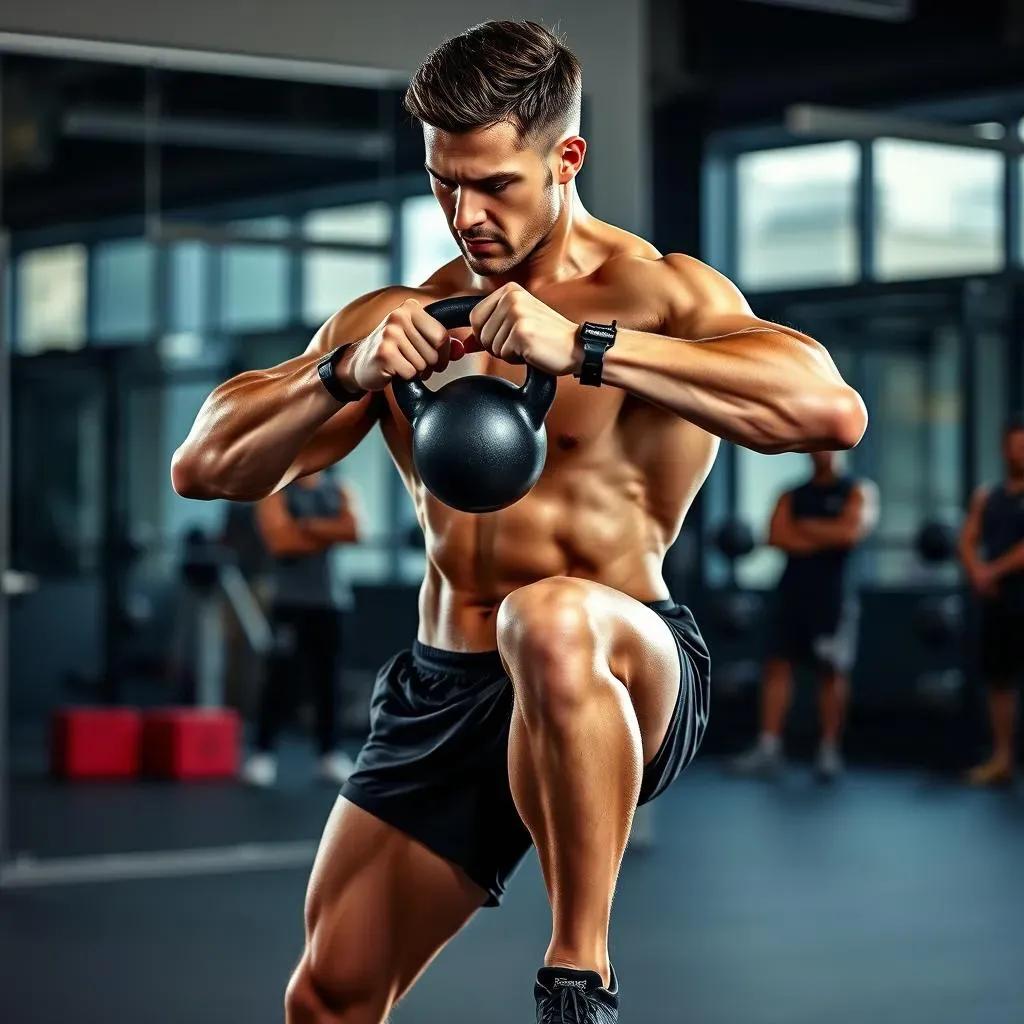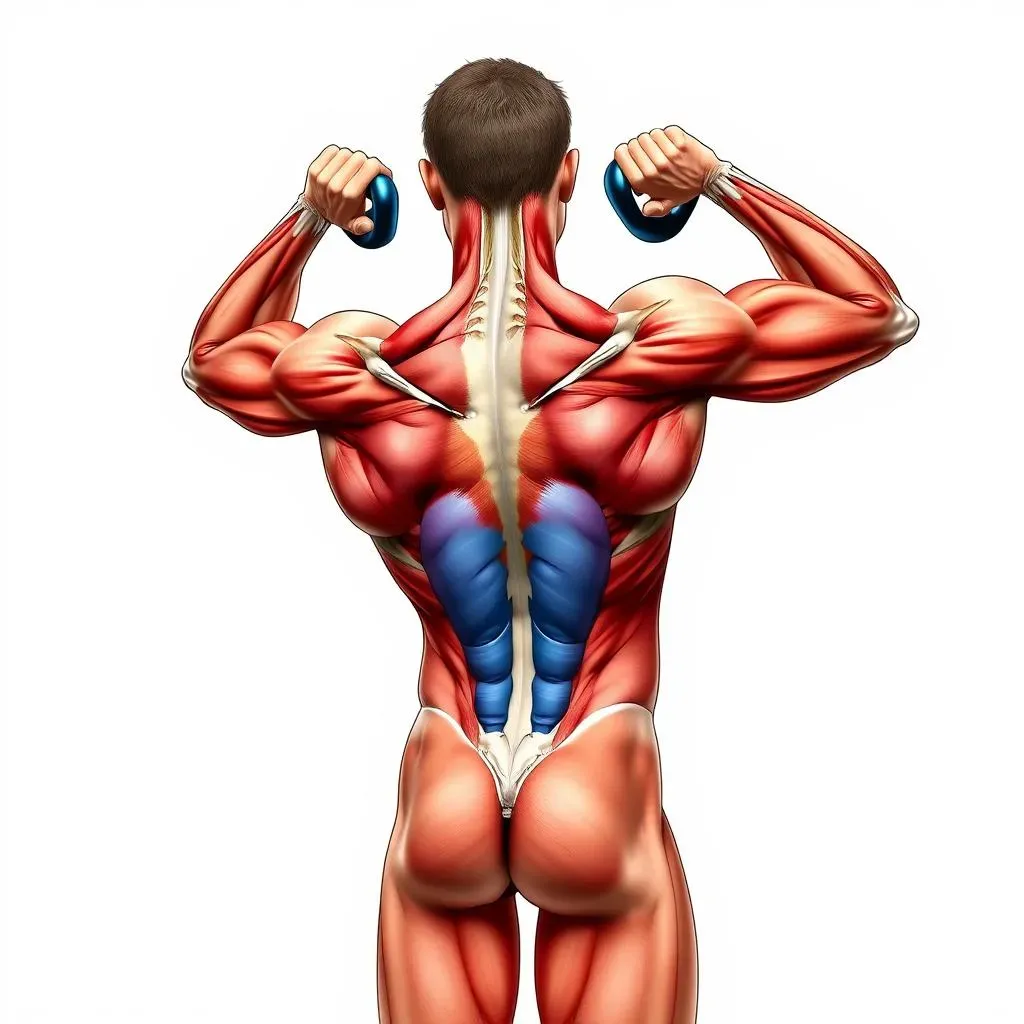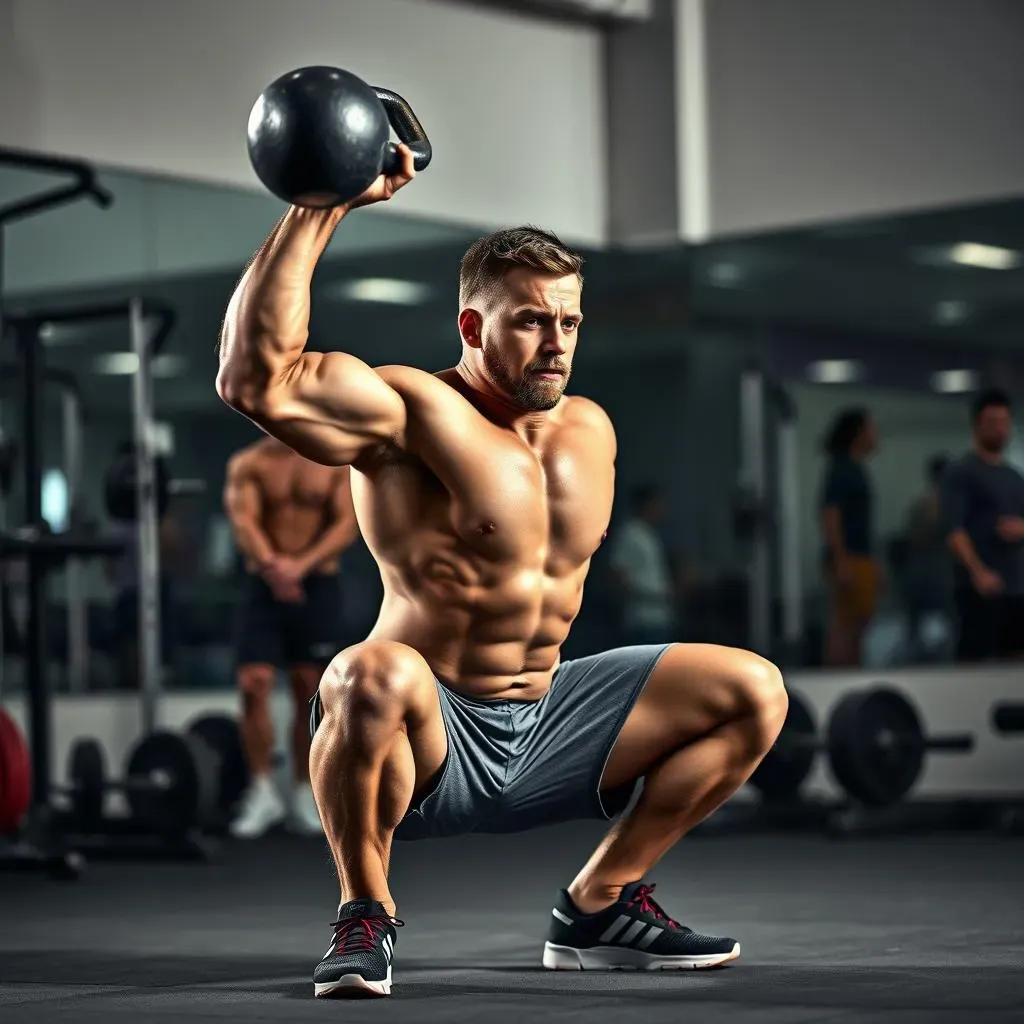Table of Contents
Ready to build serious upper body strength and sculpt your shoulders? The kettlebell shoulder press is your go-to exercise. It's not just about lifting a weight overhead; it's a full-body engagement that, when done correctly, torches calories and builds functional strength. If you're curious about the specific kettlebell shoulder press muscles worked, you've come to the right place. This article breaks down exactly which muscles are activated during each phase of the press, and why this exercise is so effective.
Benefits of the Kettlebell Shoulder Press for Muscle Development

Benefits of the Kettlebell Shoulder Press for Muscle Development
Enhanced Overhead Strength and Muscle Growth
The kettlebell shoulder press is a powerhouse for building overhead strength. Unlike machines that isolate muscles, the kettlebell press demands full-body coordination. This means you're not just working your shoulders; you're engaging your core, legs, and back to stabilize the weight. This compound movement leads to greater muscle activation and ultimately, more significant muscle growth in the deltoids, traps, and triceps. Think of it as a functional exercise that translates directly into real-world strength.
It's not just about aesthetics, either. Developing overhead strength is crucial for everyday activities like lifting objects onto shelves, carrying groceries, or even reaching for something in a high cupboard. The kettlebell press builds a foundation of strength that supports these movements and reduces the risk of injury.
Improved Core Stability and Body Alignment
Ever notice how your body instinctively braces itself when you lift something heavy overhead? That's your core kicking into gear. The kettlebell shoulder press is a fantastic core strengthener because it forces you to maintain a stable spine while pressing the weight. This constant engagement of your abdominal muscles, obliques, and lower back muscles leads to improved core stability and a stronger, more resilient torso.
Plus, the kettlebell press encourages proper body alignment. To perform the exercise correctly, you need to maintain a neutral spine, keep your shoulders packed, and engage your glutes. This conscious effort to maintain good posture translates into better alignment throughout your daily life, reducing strain on your joints and improving your overall biomechanics. Poor posture can lead to back pain, neck pain, and even headaches, so improving your body alignment can have a huge impact on your quality of life.
“The kettlebell press isn't just a shoulder exercise; it's a full-body symphony of strength and coordination.”
Functional Strength and Real-World Application
One of the biggest advantages of the kettlebell shoulder press is its focus on functional strength. Functional strength refers to the strength you need to perform everyday tasks with ease and efficiency. The kettlebell press mimics many real-world movements, such as lifting objects overhead or pushing something away from your body. By strengthening the muscles involved in these movements, you're making your daily life easier and less prone to injury.
Consider this: instead of isolating your biceps with endless curls, the kettlebell press works your biceps in conjunction with your shoulders, back, and core, mimicking how you would actually use your biceps in a real-world scenario. This integrated approach to strength training is far more effective for building functional strength and improving your overall fitness.
Kettlebell Shoulder Press: Key Muscles Worked in Detail

Kettlebell Shoulder Press: Key Muscles Worked in Detail
Deltoids: The Prime Movers
Let's get down to the nitty-gritty of which muscles are doing the heavy lifting during the kettlebell shoulder press. First and foremost, we have the deltoids, your shoulder muscles. These are the prime movers in this exercise, responsible for lifting the kettlebell overhead. The anterior deltoid (front of the shoulder) is heavily involved in the initial phase of the press, while the lateral deltoid (side of the shoulder) takes over as you move the weight higher. The posterior deltoid (rear of the shoulder) also contributes, providing stability and control throughout the movement. So, if you're feeling the burn in your shoulders, you know you're doing it right!
Think of your deltoids as a team working together to get the job done. The anterior deltoid initiates the lift, the lateral deltoid powers through the middle range, and the posterior deltoid ensures a smooth and controlled ascent. Neglecting any one of these deltoid heads can lead to imbalances and potential injuries, so it's important to focus on proper form and full range of motion.
Trapezius: Supporting the Load
Next up, we have the trapezius, or traps, which run from the base of your skull down to your mid-back. While not directly involved in pressing the weight, the traps play a crucial role in stabilizing your shoulder girdle and supporting the load as you press the kettlebell overhead. The upper traps are particularly active, helping to elevate and rotate your scapula (shoulder blade) to allow for a full range of motion in the shoulder joint.
Imagine trying to press the kettlebell without engaging your traps. Your shoulders would likely round forward, putting you at risk of injury. By actively engaging your traps, you create a stable base for the shoulder press, allowing you to lift heavier weights with greater control and confidence. Plus, strong traps contribute to better posture and a more powerful upper back.
“Don't underestimate the importance of the traps in the kettlebell shoulder press. They're the unsung heroes that keep your shoulders stable and prevent injury.”
Triceps: Extending the Elbow
Last but not least, we have the triceps, the muscles on the back of your upper arm. The triceps are responsible for extending your elbow, which is essential for locking out the kettlebell at the top of the press. While the deltoids initiate the movement, the triceps kick in to finish the job, ensuring a complete and powerful overhead press.
Many people mistakenly believe that the kettlebell shoulder press is solely a shoulder exercise, but the triceps play a significant role in the final stages of the movement. Strong triceps not only contribute to a more powerful press, but they also improve your overall arm strength and stability. So, if you want to build bigger and stronger arms, don't neglect the kettlebell shoulder press!
Muscle Group | Specific Muscle | Role in Kettlebell Press |
|---|---|---|
Shoulders | Anterior Deltoid | Initiates the press |
Shoulders | Lateral Deltoid | Powers the middle range |
Shoulders | Posterior Deltoid | Stabilizes and controls movement |
Upper Back | Trapezius | Supports shoulder girdle and scapular rotation |
Arms | Triceps | Extends elbow to lock out the press |
Essential Mobility for a Safe and Effective Kettlebell Shoulder Press

Essential Mobility for a Safe and Effective Kettlebell Shoulder Press
Shoulder Mobility: Opening the Door to Overhead Strength
Before you even think about pressing a kettlebell overhead, you need to ensure you have adequate shoulder mobility. This means having the range of motion to move your arms freely in all directions without pain or restriction. Tight shoulders can lead to compensations in your lower back, neck, and other areas of your body, increasing your risk of injury. Think of your shoulder joint as a complex puzzle, with each piece needing to move smoothly for the whole thing to function properly. If one piece is stuck, the entire system suffers.
A simple test: can you raise your arms straight overhead without arching your lower back excessively? If not, you need to prioritize shoulder mobility work before loading up the kettlebell press. Neglecting this crucial step is like trying to drive a car with flat tires – you might get somewhere, but it won't be pretty, and you'll likely cause some damage along the way.
Upper Back Mobility: The Foundation of a Strong Press
It's not just about shoulder mobility; your upper back also plays a vital role in the kettlebell shoulder press. A stiff or rounded upper back can restrict your shoulder movement, forcing you to compensate in other areas. Improving your thoracic spine mobility allows you to maintain a neutral spine during the press, which is essential for protecting your lower back and maximizing your pressing power. Think of your upper back as the foundation of a building – if it's weak or unstable, the entire structure is compromised.
Exercises like thoracic spine rotations, cat-cow stretches, and foam rolling can help improve your upper back mobility and set you up for a safer and more effective kettlebell shoulder press. Remember, mobility is not just about flexibility; it's about having control and stability throughout your entire range of motion.
Kettlebell Shoulder Press Variations and Combination Exercises to Target Different Muscles

Kettlebell Shoulder Press Variations and Combination Exercises to Target Different Muscles
Unlocking New Challenges with Kettlebell Press Variations
Alright, so you've mastered the basic kettlebell shoulder press. What's next? Time to spice things up with some variations that'll challenge your muscles in new ways and prevent plateaus. The beauty of kettlebells is their versatility. By tweaking your stance, grip, or even the movement pattern, you can emphasize different muscle groups and keep your workouts fresh and engaging. Think kneeling presses for core stability, bottoms-up presses for grip strength, or even alternating presses for a coordination challenge. It's all about finding what works best for your body and goals.
Don't be afraid to experiment and see what feels good. The kettlebell press is a journey, not a destination. There are always new variations to explore and new challenges to conquer. By incorporating these variations into your routine, you'll not only build more strength and muscle, but you'll also improve your overall athleticism and movement quality. It's a win-win!
Full-Body Power: Combining the Press with Other Movements
Want to take your kettlebell workouts to the next level? Try combining the shoulder press with other exercises to create challenging and effective full-body movements. Think kettlebell thrusters (squat + press), lunge presses, or even sit-through presses. These combination exercises not only work your shoulders, but they also engage your legs, core, and cardiovascular system, making them a great way to burn calories and build overall fitness. Plus, they're a lot more fun than doing endless sets of isolated exercises.
Combining movements forces your body to work as a unit, improving your coordination, balance, and functional strength. It's like turning your workout into a dynamic puzzle, where each exercise complements the others to create a synergistic effect. So, ditch the boring isolation exercises and embrace the power of combination movements. Your body (and your mind) will thank you for it!
Variation | Description | Muscles Targeted |
|---|---|---|
Kneeling Press | Press performed while kneeling. | Shoulders, Core |
Bottoms-Up Press | Press with the kettlebell upside down. | Shoulders, Grip, Forearms |
Thruster | Squat followed by a press. | Shoulders, Legs, Core |
Lunge Press | Press performed during a lunge. | Shoulders, Legs, Core, Balance |
Conclusion: Mastering the Kettlebell Shoulder Press for Full-Body Strength
The kettlebell shoulder press is more than just an upper-body exercise; it's a testament to functional fitness and full-body coordination. By understanding the specific kettlebell shoulder press muscles worked, focusing on proper form, and incorporating variations to challenge yourself, you can unlock a new level of strength, stability, and overall athleticism. So, grab a kettlebell, dial in your technique, and press your way to a stronger, more resilient you!